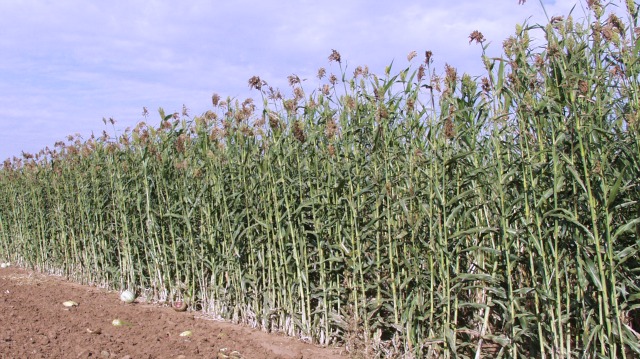I started out life as a purpose-grown biomass guy. My father did all the original breeding work in Hawaii to increase the cane sugar content from 12% to 18%. In California, where I was raised, he did all the breeding work on stone fruit (peaches, plums, and nectarines). He and a small group of guys from UC Davis established the table fruit business here (and in Chile) as we know it today; mostly for the better; some things are worse.
During all the years I was growing up, one of my father’s hobbies was to collect sugarcane-sorghum hybrids and to cross breed those grasses; we always had test-plots growing giant grass species, along with an extensive experimental orchard, with fruit collected from all over the world. We always took the time to look at emerging energy crops; from guayule, to jojoba, to euphoriba; and of course, any interesting grass species. I worked on fermenting sugar to ethanol, and built my first distillation system in 6th grade. We had strains of trichoderma viride 10-years before it was on anyone’s radar. It was just a hobby, you understand; like some people collect stamps.
But we always talked about the real-world issues, particularly including harvesting cycles, and the need for continuous availability of the feedstock, 365 days per year. Very early on, I could see that the biomass fraction was as important as the primary plant products (sugar, oils, or protein). In those day, we envisioned a 10-foot grass stalk, with 20% sugar, bearing a huge grain head. I looked at all the methods to process the biomass fraction, and concluded that thermal processing methods (via pyrolysis, gasification, or hydrogenation) would be the winners. And what was a family hobby growing up, eventually became the focus of my professions expertise.
That introduction is intended to qualify my interest in selecting appropriate (economic & available) energy feedstocks. After doing a lot of thermal processing of traditional feedstock, i.e., coal gasification — going all the way back to Texaco’s Coolwater gasification project. I discovered “opportunity” feedstocks in the late 1980’s. During the 1990’s I worked on gasification of Auto Shredder Residue (ASR) and then Municipal Solid Waste (MSW); using waste feedstocks for energy conversion — resources that no one else wanted. Now, here we are in 2013. Oil is nearing a $100 per barrel; and it will be significantly above that if the Middle East becomes completely unstable.





